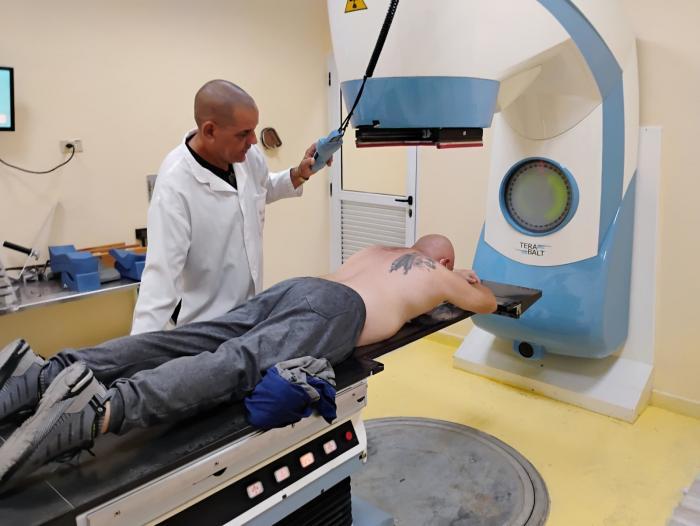
Santa Clara.– With the implementation of modern Cobalt-60 Terabalt Phoenix external radiotherapy equipment in several provinces of the country, Cuba is taking a key step in the care of cancer patients and in strengthening the national cancer treatment network.
This technology will benefit thousands of people in the central-eastern region who, lacking this vital service to improve their quality of life and, in many cases, their very survival, were forced to travel long distances to be treated in other areas that did have similar equipment.
The healthcare centers benefiting from the new radiotherapy equipment are the Celestino Hernández Robau Oncology Hospital in Villa Clara, which receives patients from Matanzas to Ciego de Ávila; the Holguín Regional Oncology Center, which benefits patients in the eastern region; and the María Curie Provincial Teaching Oncology Hospital in Camagüey, which treats patients from Ciego de Ávila, Camagüey, and Las Tunas.
Sergio Marcelino Santana Rodríguez, head of the Radiotherapy Service in the central region, explained to the press that between 70% and 80% of cancer patients need radiation treatment, either to treat the cancer or to alleviate its symptoms, which can cure it, prevent it from recurring, or stop or slow its growth.
He also pointed out that, given the increase in risk factors and the aging of the population, this disease is becoming increasingly common in Cuba and is even the leading cause of death in some areas, which has forced the health system to pay more and more attention to this type of patient, despite the high cost of treatment.
Among the main pathologies treated with radiation, the experienced specialist mentioned breast, lung, head, neck, and prostate cancer as the most common, although there has also been an increase in digestive tract, colon, and rectal cancers, lymphomas, nervous system cancers, and peripheral tumors.
Regarding the benefits that the implementation of modern technology will bring, Dr. Santana Rodríguez highlighted the gradual reduction in waiting lists and the possibility of treating more than 600 patients per year in each territory, a figure much higher than the current one, which was very limited due to the technological obsolescence of the equipment installed, which had been in use for many years.
As a strategy of the health system, our country has prioritized care for those suffering from breast and prostate cancer, the most common types, as well as those with cancer in the oral cavity or cervix, and tumors in children.
Between 2010 and 2019, Cuba saw an annual average increase of 934 new cases of cancer in males and 764 for women, according to Dr. Janet Lamadrid García, head of the Department of Pathological Anatomy at the Institute of Oncology and Radiobiology, who also said that by 2030, the total number of new cases could exceed 57,000.
According to Dr. Lamadrid García, in recent years, approximately 55,000 new cases are diagnosed annually, 60% of which correspond to six main locations by sex: non-melanoma skin, lung, prostate, oral, colon, and laryngeal cancer in men; and non-melanoma skin, breast, lung, colon, and cervical cancer in women.
By province, 60% of this incidence is located in six territories: Havana, Matanzas, Villa Clara, Camagüey, Holguín, and Santiago de Cuba. However, cancer is a disease that is present throughout the country, said the specialist, adding that one in five deaths in Cuba is due to cancer, with a decrease in the age of those who die.
As part of the Cuban government's policy, there are several measures in place for the early detection and diagnosis of this disease. Significant resources have been allocated to the implementation of techniques that complement and strengthen diagnosis, facilitating the application of more personalized therapies to patients.
Among these technologies is the commissioning of modern immunohistochemistry laboratories, which provide services at the Institute of Oncology and Radiobiology, and at the Hermanos Ameijeiras Hospital in Havana and the Arnaldo Milián Castro Hospital in Villa Clara. Added to this is the installation of innovative radiotherapy devices, such as those described above.















